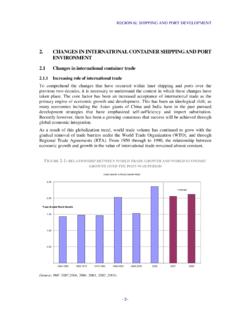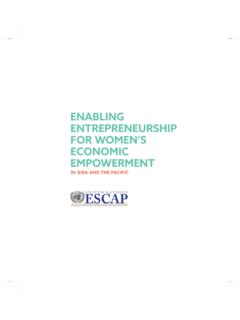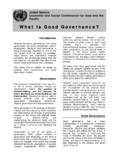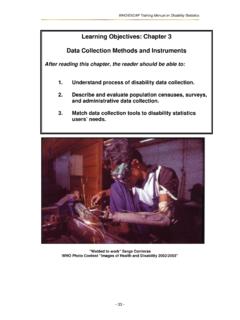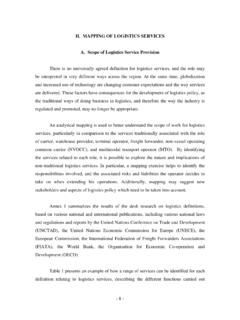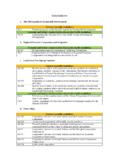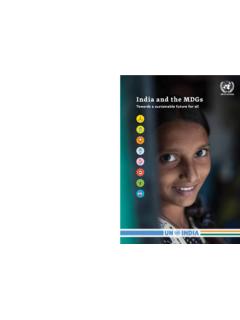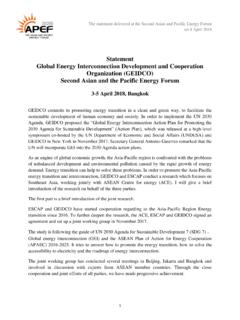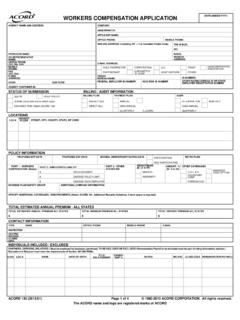Transcription of THE PHILIPPINE MARITIME INDUSTRY: PROSPECTS AND …
1 1 THE PHILIPPINE MARITIME industry : PROSPECTS AND CHALLENGES IN 2013 AND BEYOND I. Introduction MARITIME transport is the backbone of international trade and a key engine driving globalization and competitiveness. Around 80% of global trade by volume and over 70% by value is carried by sea, as per the UNCTAD estimate. The 2011-2016 PHILIPPINE Development Plan (PDP) envisions a safe, secure, efficient, viable, competitive, dependable, integrated, environmentally sustainable and people-oriented PHILIPPINE transport system . The main objective is to ensure an integrated and coordinated intermodal transport network with backbone links to growth areas. The critical role of MARITIME transport in ensuring an integrated and coordinated transport network is incontestable for an archipelagic country like the Philippines.
2 Since a high percentage of domestic and international commerce, travel and tourism are by air and sea, the efficiency of aviation and MARITIME transportation has become increasingly critical to growth and competitiveness. Solutions to the numerous challenges involved in creating an efficient modern air and sea transportation system require addressing policy and regulatory impediments as well as upgrading and rationalizing airport and seaport infrastructure and networks. The continuous capacity expansion of seaports and sea links will thus remain as a major development thrust. The Philippines counts on the MARITIME industry as a vital component in attaining inclusive growth and socio-economic progress.
3 Shipping remains the major infrastructure by which islands are linked, as well as, connects the country to international commerce and trade. A responsible and modern PHILIPPINE registered fleet, supported by quality seafarers and capable shipyards, will pave way for stability of trade, promote national development and promotes national security. Per the NTPP study estimate, in 2006, the predominant mode of transport is by road carrying about billion passengers ( %) and million tons of freight (58 %), with water transport at % and 42 %, respectively. In 2012, domestic shipping posted 74 million tons of cargoes and 50 million passengers. Seafarer s remittances US$ billion also contributed to the PHILIPPINE economy.
4 The MARITIME industry Authority (MARINA), an attached agency of the Department of Transportation and Communications (DOTC), performs promotion and developmental as well as supervisory and regulatory functions over four (4) major sectors of the PHILIPPINE MARITIME industry . MARINA functions cover domestic shipping; overseas shipping; ship building and ship repair; and MARITIME manpower sectors. MARINA assumed a new mandate under Executive Order No. 75 issued on 30 April 2012, designating the DOTC through the MARINA as the Single MARITIME Administration in the Philippines responsible for oversight in the implementation 2 of the 1978 STCW Convention, as amended. Consequently, MARINA assumed the functions of the MARITIME Training Council (MTC) on 01 July 2012.
5 MARINA had total revenue collection of P million in 2012, with total budget support of P million. Total budget for 2013 stands at P million. The purpose of this Document is to present MARINA s main strategic agenda and key areas for action in 2013 and beyond, to nurture and strengthen the competitiveness of the PHILIPPINE MARITIME industry and enhance functional performance as the Single MARITIME Administration in the implementation of the 1978 STCW Convention, as amended. This Document provides a collective guide for broadening and deepening concerted collaboration and support from all stakeholders concerned with the view of undertaking the practical implementation of the actions and measures identified in this strategic document.
6 A Snapshot of the PHILIPPINE MARITIME industry The PHILIPPINE domestic merchant fleet in 2012 comprises 8,112 vessels; 60% (or 4,837) for passenger service, most of which are motorbancas, 28% (or 2, 291) cargo ships and 795 (10%) tankers and tugboats. There are about 6,000 plus registered fishing vessels. For 2012, there were 12,924 ship Safety Inspection System (SSIS)-related Certificates issued and 560 company/ ship audit issuances in line with the ISM/NSM Code implementation. Quasi-judicial issuances in 2012 number around 1,019. There were 442 total importations from 2010-2012, mostly for cargo transport. Passenger vessels are 18 to 20 years old. Cargo vessels have average age of 11 years old in 2012.
7 Bareboat chartered vessels however are much younger and modern than imported ones. For 2012, there were 17 shipping companies involving 39 vessels endorsed to the Department of Finance (DOF) for VAT exemption of US$ million from the total acquisition cost of US$ million pursuant to RA 9295. There were also 21 vessels endorsed to the Board of Investments (BOI) for availment of tax incentives under the BOI Investment Priorities Plan (IPP). Domestic operators total 2,497, where 509 are corporate entities and 1,952 are single proprietors. Overall, they serve 14 primary routes and 102 secondary routes. Some 1,600 tertiary routes are served by motorboats/motorbancas.
8 The primary routes are served by four (4) major shipping lines operating 17 long haul vessels. The secondary routes are served by RORO vessels numbering to 183 operated by 34 shipping companies. Under the Road RORO Terminal System (RRTS), 18 of the 32 identified routes are now served by 41 shipping companies deploying 129 vessels. Eight companies are also serving 15 RORO missionary routes. The development of nautical highways demonstrated the potential of intermodal integration to improve inter-island connectivity. The RORO-enabled ports and new RORO ferry routes augmented the capacity of the existing port infrastructure to carry traffic, and were aimed at providing an alternative to longer-distance inter-island shipping.
9 3 The Philippines ranks as the 29th MARITIME country among the top 35 flags of registration, per the UNCTAD MARITIME Review 2012. In 2012, there were 68 PHILIPPINE overseas shipping companies, with combined paid-up capital of P 999 million and 183 other accredited overseas MARITIME -related companies with total paid-up of P billion. The PHILIPPINE overseas registry consists of 126 vessels (from 170 in 2010) of million million DWT with average age of 11 years. Bulk carriers and general cargo ships constitute 60% of the total overseas registered vessels. The PHILIPPINE overseas shipping companies contributed about P 60 million for % withholding tax to BIR and P million in fees to MARINA.
10 Shipping connectivity is an important determinant of trade costs, and understanding them will allow policymakers to improve their country s trade competitiveness. The Philippines is fairly connected with the global container shipping services network. In terms of the UNCTAD s Liner Shipping Connectivity Index (LSCI), the Philippines ranks 61 out of 162 and 66 out of 159 countries based on 2009 and 2012 data. The LSCI score indicates how well countries are connected to global shipping networks based on the status of their MARITIME transport sector. The LSCI, which has been produced since 2004, consists of five components, namely (a) the number of ships; (b) their container-carrying capacity in 20-foot equivalent units; (c) the number of companies; (d) the number of services provided; and (e) the size of the largest vessels that provide services from and to each country s seaports.
